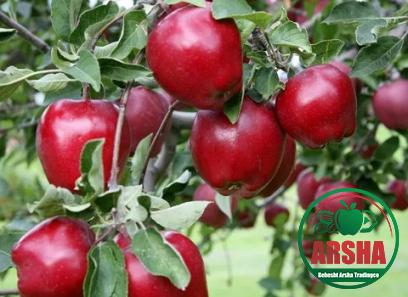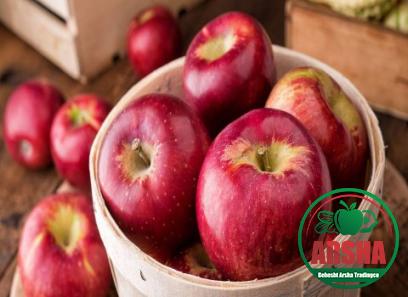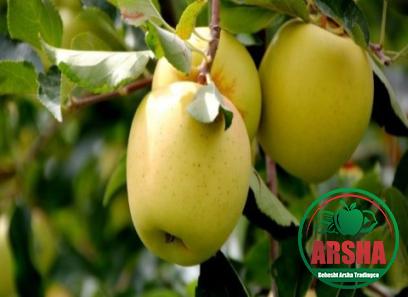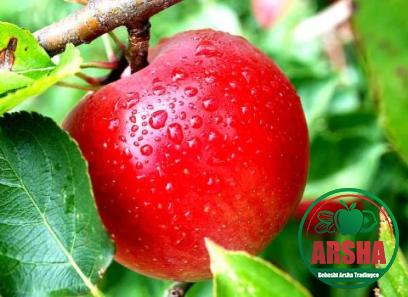buy apple fruits + great price with guaranteed quality
The apple (Malus Domestica Borkh
) It is one of the most productive and economically essential fruits of temperate regions
Apple fruit color development is an important goal for both researchers and researchers, as consumers associate bright-colored red apples with ripeness and good flavor
In these recent years, significant progress has been made in research on the development of apple color, but its development mechanism has not been systematically analyzed by aspects of genetics, transcription, or environmental factors

Here, we summarize the research on apple coloring, including the development of critical genomic databases to identify essential genes and genomic regions, genetic and transcriptional factors that regulate pigment accumulation, environmental factors that influence anthocyanin synthesis, and current progress
Reproductive red-red skin
And pulp apples
We describe key transcription factors, such as MYOB, bHLH, and WD40, which regulate anthocyanin synthesis and fruit color development in golden delicious apples
We shall also discuss the regulation of apple color by external environmental factors such as light, temperature, and water
This review provides information on the molecular mechanisms underlying anthocyanin biosynthesis in apples
This information will provide an essential guide for breeding high-quality red-skinned, red-fleshed apple varieties
The apple (Malus Domestica Borkh
) is one of the most productive and economically essential fruits in temperate regions (Velasco et al
, 2010)
It is popular among growers and consumers due to its solid ecological adaptability and good nutritional value (Eberhardt et al
; Boyer and Liu, 2004; Hyson, 2011)
accorded to World Apple Review (2018) statistics, apples accounted for 12
26% of global fruit production between 2012 and 2014, second only to bananas and citrus (World Apple Review, 2018)
Accorded to the Food and Agriculture Organization of the United Nations (FAO), the world production of apples in 2015 exceeded 80 million tons (FAO I, 2015)
The main apple cultivars can be hardly divided into red varieties such as “Red Delicious,” “Fuji,” and “Royal Gala” and colorless varieties such as “Golden Delicious,” “Granny Smith,” and “Orin
” Consumers associate red apples with ripeness and good flavor
As a result, red apple varieties tend to have better marketability and more economic value (King and Cliff; Ban et al
, 2007; Wang et al
, 2018a)
Therefore, the development of fruit color is one of the main objectives of apple growers and also researchers
Anthocyanins mainly determine the Fruit color, an important class of secondary metabolites synthesized in higher plants
Anthocyanins show a different color depending on the pH in the cells, so the leaves, flowers, fruits, and seeds of plants have different colors, such as purple, red, or blue
Anthocyanins are actually the glycosylated derivatives of anthocyanidins and are being generated by forming a glycosidic bond between anthocyanidin and various monosaccharides (glucose, galactose, rhamnose, xylose, or arabinose)
In apples, cyanidin is the primary type of anthocyanidin
It combines mainly with galactose to form cyanidin-3-galactoside, representing approximately 80% of anthocyanins (Treutter, 2001)
The biosynthetic pathway of anthocyanins in plants has been thoroughly investigated
The metabolic pathway is highly conserved across species, and genes encoding key enzymes have been cloned and identified
In addition to the structural genes involved in this biosynthetic pathway, transcription factors (T
F
s) that regulate anthocyanin synthesis have also drawn the attention of researchers
Many T
F
families related to anthocyanin synthesis, including MYB, bHLH, WD40, WRKY, and zinc finger proteins, have been identified and isolated from various plants (Walker et al
, 1999; Borevitz et al
, 2000; Liu et al
, 2019)
A ternary protein complex comprising MYB and WD40 (MBW) proteins is essential in regulating anthocyanin synthesis, and MYBs are the main genes
The first MYB genes identified and isolated from apples were MdMYB1 (MdMYBA) and MdMYB10, which encode T
F
s that regulate anthocyanin synthesis in red-skinned apple red-fleshed apples, respectively
Interestingly, identifying these genes predates the sequencing and assembly of the apple genome
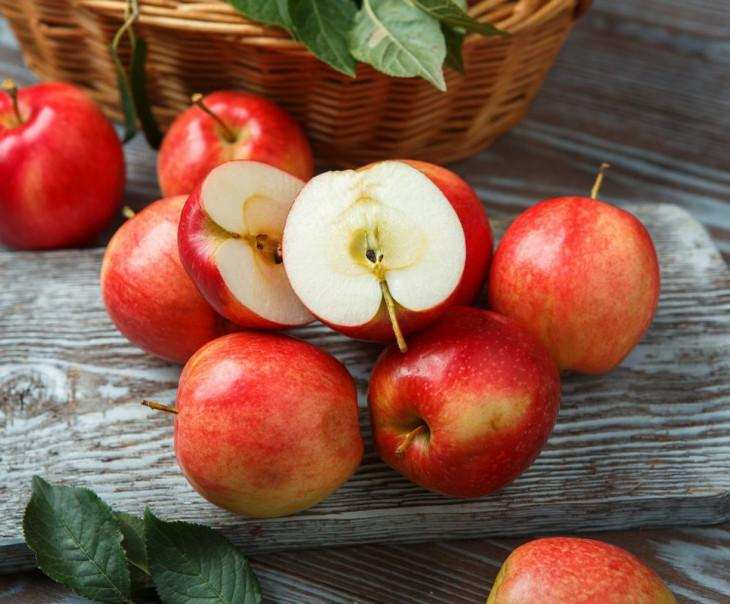
The complete sequence of the apple genome, approximately 742
3 Mb, was initially reported by Velasco et al
Of this first draft genome sequence, 603
9 Mb were assembled, and 593
3 Mb were mapped to 17 chromosomes
Since it was the first sequenced, the apple genome has been continuously updated
High-quality apple genomes were assembled using the latest sequencing technologies or homozygous samples (Li et al
, 2016; Daccord et al
, 2017)
Since its genome has been fully sequenced, the apple has become a kind of perennial model fruit tree, and there has been a rapid increase in research on color development, strength, flavor, storage attributes, and other apple traits
With the continuous improvements of the apple genome sequence and the development of genetic maps, research on the apple fruit color development has entered a new era
This provided new opportunities to analyze the genetic basis of red skin and red meat traits
Furthermore, with biotechnological tools, molecule-assisted selection and molecule-assisted breeding are progressively applied to apple cultivation
These methods can significantly reduce the breeding period and improve the reproductive efficiency of red-skinned and red-fleshed apple varieties
This review focuses on the development of fruit color in the red gala apple
This review summarizes recent studies on the genetic basis of apple fruit color and discusses fruit color development’s transcriptional and environmental regulation
We will also review the progress of current research and breeding programs for red-skinned and red-fleshed apples
The general objective of this review is to provide valuable information on the molecular mechanisms of anthocyanin biosynthesis and the improvement of the red apple
Genetics and genomics of apple color development
Genomics is one of the fastest developing emerging biology, medicine, and agriculture disciplines
The genomes of most fruit trees have already been sequenced
With the falling cost of sequencing, it is easy for breeders to obtain information on molecular markers

This information can understand how fruit trees adapt to the environment and continue to reshape or genetically modify fruit trees to meet future agricultural needs (McCouch et al
, 2013)
Transcriptional regulation of fruit color in apple
A number of structural enzymes catalyze the biosynthesis of anthocyanins, and various T
F
s and transcription complexes regulate the expression of the coding genes
The transcriptional regulation of anthocyanin synthesis was first studied in model plants such as maize, Arabidopsis, and petunia more than 30 years ago, but recent research has been focused on this process on apple fruit trees
The transcription factors regulate the expression of most genes by binding to cis-elements in their promoter regions
Some T
F
genes Environmental regulation of fruit color in apple
Secondary plant metabolism evolved during interactions between plants and biotic/abiotic environmental factors
Secondary metabolites, such as flavonoids, terpenoids, and alkaloids, play an essential role in plant protection and competitiveness and help coordinate the relationship between plants and the environment
In addition to genetic and transcriptional regulation, temperature, water, sugars, and the plant Improvement of apples with red skin and red pulp
With the growing demand for high-quality apples, fruit with a bright color, rich aroma, and excellent flavor has become an essential focus for breeders
Associate red apple varieties with ripeness, consumers, and good taste (King et al
, 2002; Ban et al
, 2007)
Furthermore, the red-fleshed apple as a new fruit has attracted more attention from researchers and breeders in recent years (Wang et al
, 2018a)
The complexity of the regulatory mechanism of anthocyanin biosynthesis in apples is the embodiment of germplasm diversity
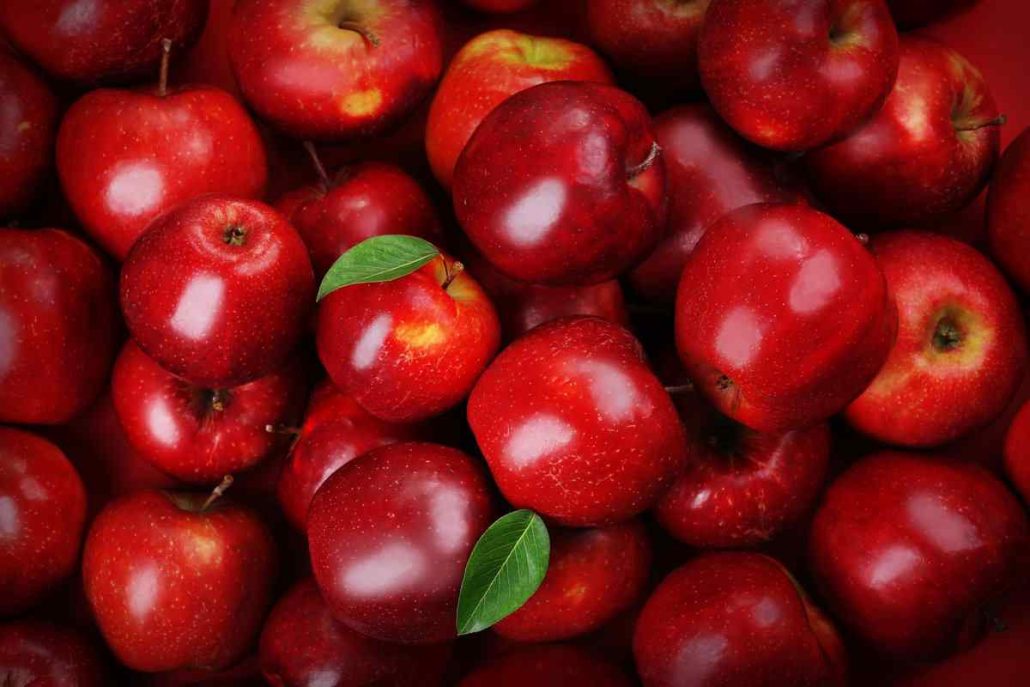
The continuous development of molecular biology technologies and further research will provide further details on the regulation of anthocyanin synthesis and the development of fruit color
This information will help improve the anthocyanin content and the general quality of the fruit
However, the mechanisms of regulation of anthocyanin synthesis are pretty complex and highly
Benefits of apple for skin
There are numerous naturally occurring fruits and vegetables that are very useful for us: oranges, apples, papaya, berries, and lemons, to name a few
As a cliché, the saying “an apple a day keeps the doctor away” is entirely accurate as the fruit includes several essential nutrients and vitamins that protect us from various diseases
Some researchers found out that an apple a day can also keep skin dull! We have discovered how apples benefit the skin, and we can’t wait to share them with you! If you are someone who has an apple in their lunch box, chances are you already have beautiful skin! For those who don’t like apples so much, look at these delicious ways to include apples in your daily diet at the end of this article
Glowing skin
Rich in vitamins A, B, and C complexes, apples benefit the skin by helping to eliminate pathogens and excess oil
Eating apples regularly can brighten the skin and correct uneven skin tone
The antioxidants in this fruit accelerate skin cell rejuvenation and help keep skin healthy and glowing
How to use: In addition to including it in your diet, you can also make an apple face mask by grating green apple and applying it to your face
This will maintain the skin’s natural pH balance and keep common skin problems at bay
Prevents premature aging
Sun exposure, pollution, and other environmental stressors cause skin damage from free radicals
These free radicals destroy collagen and elastin fibers in the skin to make fine lines and wrinkles appear earlier and more prominently

Vitamin C is a powerful antioxidant that can help tackle the problem of premature aging
Apples contain a lot of vitamin C and, if consumed regularly, can reduce the first signs of skin aging
How to use: To reap the benefits of apple for the skin, extract the juice from an apple and apply it all over the face and neck with a cotton ball
Let it dry and then rinse with water, do it 2-3 times a week for best results
Treat acne and blemishes
Did you know that regular consumption of green apples can help control the appearance of acne and pimples? If you have active acne, dark spots, or spots, they can also be corrected with the help of apples
If chemical-based acne creams don’t help, this nutrient-rich fruit may be the answer to your prayers
How to use: Mash a slice of apple and mix it with a spoonful of milk
Apply this mixture to the affected areas to relieve acne, blemishes, and dark spots
Moisturizes the skin
Hydration is the real secret to soft, supple, and radiant skin
While it is essential to consume the recommended daily intake of water, it alone may not be able to hydrate the entire body
It is vital to include fruits and vegetables that moisturize the skin
The high water content in apples makes them an excellent choice for maintaining hydration levels

How to use: Cut an apple into thin slices and apply it immediately all over the face to get all the benefits of apples for the skin
Let it sit for 15-20 minutes, and sprinkle some water for smooth, hydrated skin
Offers U
V
protection
When we say one of the benefits of apples for the skin is U
V
protection, we don’t mean that you can skip sunscreen
Certain nutrients in apples offer protection from the sun’s harsh rays
Apples can be used in the treatment of sunburn
It helps soothe the area and soothes the irritated skin and the burning sensation
How to use: grate an apple to obtain the pulp, add a teaspoon of glycerin and mix until a smooth paste is obtained
Apply this paste evenly on the face and neck, leave for 15 minutes, then rinse with cold water
Reduces dark circles and puffy eyes
Another benefit of apples for the skin is reducing dark circles and puffy eyes
Lack of sleep, stress and other reasons can cause pigmentation under the eyes
Apples can help lighten these dark circles and make the under-eye area brighter
How to use: Cut the apple slices, place them under the eye and relax them for 20 minutes
You can also boil a few pieces of apple in water
Once they are smooth, squeeze them and apply them under the eyes to lighten the pigmentation
The apple fruits are one of the most beneficial fruits in the natural resource category
Their presence in our daily diets is a must-have thing and should not be forgotten
Importers and exporters of fruit know that the apple fruit is an excellent option for business since it can sell pretty much everywhere and quickly too
Our company has been growing fruits for more than a decade, and now we aim to reach to provide a larger amount of the supplies to the other countries
Please fill out an inquiry on our website for further information and questions
Our assistants are available 24 hours a day to provide you with full service

